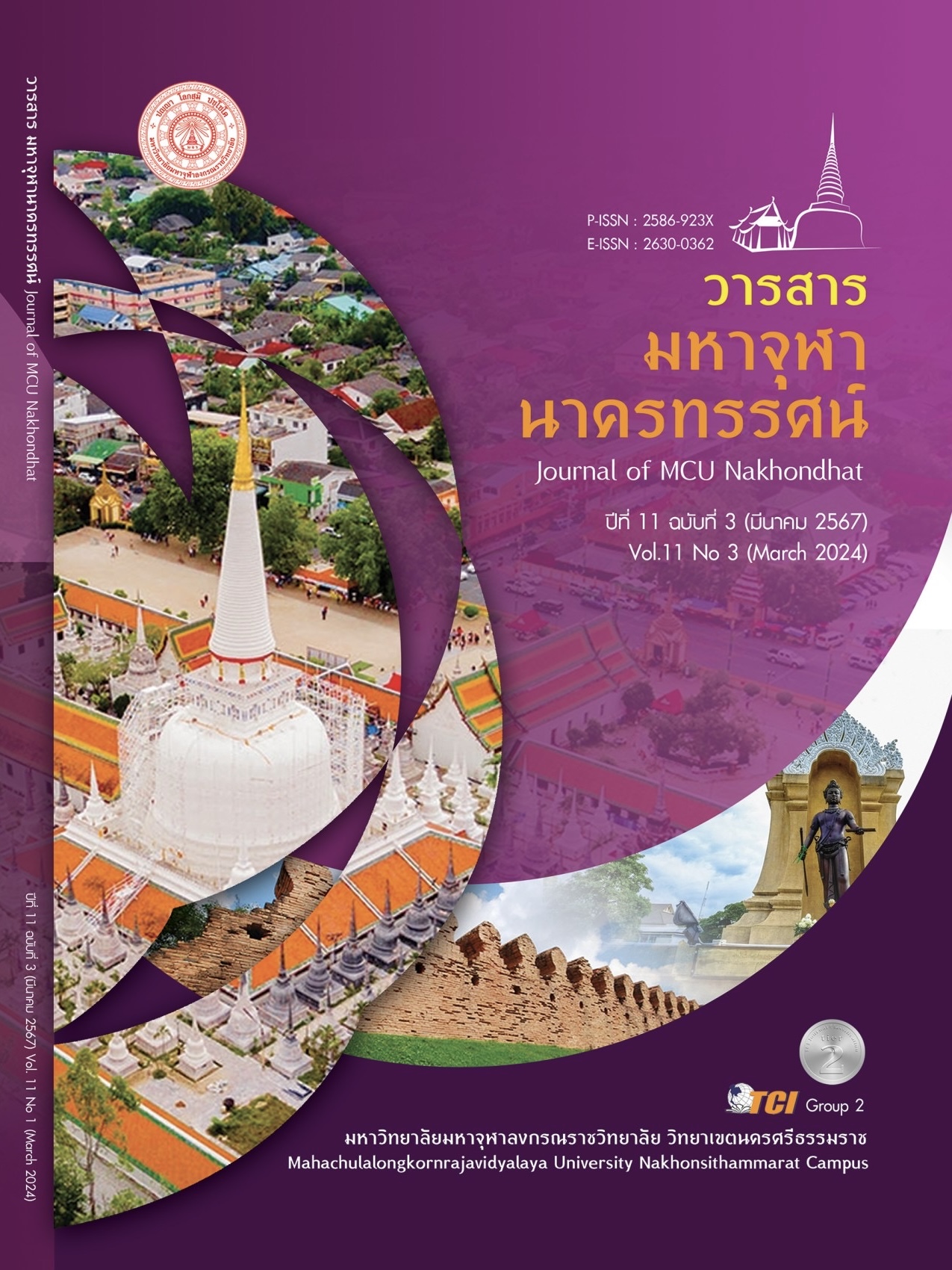EXPOSURE TO ONLINE MEDIA, ATTITUDES, SUBJECTIVE NORM AND INTENTION TO USE BEAUTY PROCEDURES SERVICES AMONG THE BEAUTY BEASTS GROUP
Main Article Content
Abstract
This research article The objectives are to study 1) exposure to online media, attitudes, and conformity to reference groups and intention to use cosmetic procedures services. 2) Influence of exposure to online media on attitudes Conformity to the reference group and intention to use cosmetic procedures. 3) Influence of attitude on intention to use cosmetic procedures. 4) Influence of conformity to the reference group on intention to use cosmetic procedures. 5) Joint influence of exposure to online media, attitude, and conformity to the reference group towards intention to use beauty procedures services This research is quantitative. An online questionnaire was used to collect data from a group of 400 Beauty Beasts, Descriptive and inferential statistics were used for data analysis, The inferential statistics used to test hypotheses include regression analysis and simple and multiple regression analysis. The results of the research found that 1) there was exposure to online media about cosmetic procedures through TikTok and a positive attitude towards cosmetic procedures. 2) Exposure to TikTok media influences attitude (β = 0.432), YouTube media influences conformity to the reference group (β = 0.576), and YouTube media influences intention to use the service (β = 0.479). 3) Attitudes regarding cosmetic procedures influence intention to use cosmetic procedures (β = 0.512). 4) Conformity to the reference group influences intentions to use cosmetic procedures (β = 0.699). 5) Exposure to online media (β = 0.094), attitude (β = 0.209) and conformity to the reference group (β = 0.547) jointly influence the intention to use beauty procedures services in the Beauty Beasts Group
Article Details

This work is licensed under a Creative Commons Attribution-NonCommercial-NoDerivatives 4.0 International License.
References
ชูชัย สมิทธิไกร. (2556). พฤติกรรมผู้บริโภค.(พิมพ์ครั้งที่ 3). กรุงเทพมหานคร: สำนักพิมพ์แห่งจุฬาลงกรณ์มหาวิทยาลัย.
สิริชัย วงษ์สาธิตศาสตร์. (2549). ช่องทางใหม่ในการรายงานข่าวของสื่อมวลชนไทย. วารสารรามคำแหง, 23(1), 43-69.
สุจิตรา อันโน. (2565). ผู้หญิงอย่าหยุดสวย ดัน “ตลาดเสริมความงาม”. เรียกใช้เมื่อ 4 มีนาคม 2567 จาก https://marketeeronline.co/archives
สุรสิทธิ์ วิทยารัฐ. (2545). การสื่อข่าว : หลักการและเทคนิค. กรุงเทพมหานคร: สถาบันราชภัฏสวนสุนันทา.
เอกก์ ภทรธนกุล. (2566). ‘กัลเดอร์มา’ ส่องเทรนด์ความงามมาแรงปี 2566 สวยในแบบของตัวเอง สวยสมบูรณ์แบบที่แตกต่างกัน. เรียกใช้เมื่อ 4 มีนาคม 2567 จาก https://www.naewna.com/lady
Ajzen, I., & Fishbein, M. (1980). Understanding attitudes and predicting social behavior. Englewood Cliffs, N. J.: Prentice - Hal.
Edward Thorndike. (1920). Know the Halo Effect, the trap of false recruiting. Retrieved March 4, 2024, from https://adecco.co.th/en/knowledge-center/detail/hr-insight/halo-effec
Foster. (1952). Psychology of Life Adjustment. Chicago: America Technical.
I-dac Bangkok. (2022). Types of INFLUENCERS choose to use in making MARKETING popular. Retrieved March 4 , 2024, from https://digitorystyle.com/influencers/
Katz, E., Gurevitch, M., & Haas, H. (1973). Use of Mass Media for Important Things. American Sociological Review, 38(2), 164-181.
Miller, K. (2005). Communications theories: perspectives, processes, and contexts. New York: McGraw-Hill.
Quester, et. al. . (2007). Consumer Behaviour Implication for Marketing Strategy (5th ed.). Australia: McGraw Hill, New South Wales.


